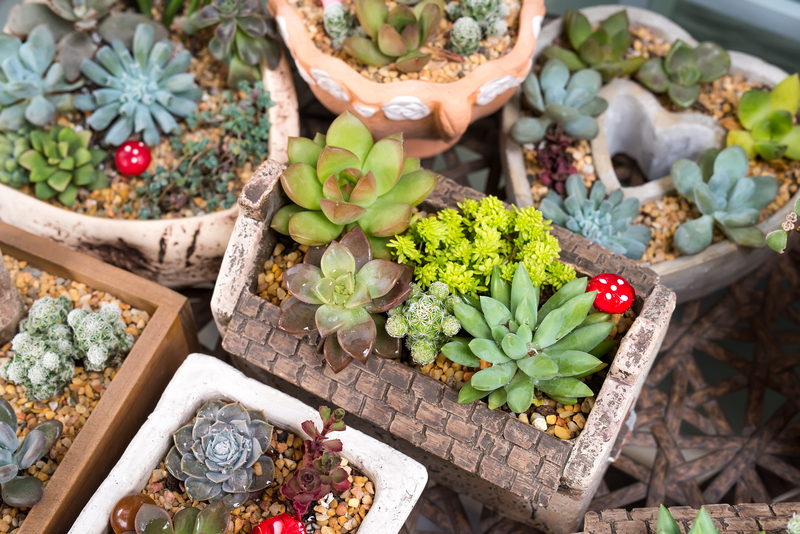How to Use Epsom Salt for Hassle-Free Stump Decomposition
Are you struggling with unsightly tree stumps cluttering your yard? Epsom salt--commonly known for soothing baths and revitalizing soil--can be the ideal, eco-friendly solution for hassle-free stump decomposition. This comprehensive guide delves into how to use Epsom salt to remove a tree stump, why it works, and what to expect during the process. Follow these steps and expert tips for effective and safe stump decomposition right in your backyard.
Why Choose Epsom Salt for Stump Removal?
Using Epsom salt for tree stump decomposition has grown popular among gardeners and homeowners due to its natural, non-toxic properties. Unlike harsh chemicals, Epsom salt (magnesium sulfate) does not harm surrounding soil, plants, or wildlife when used properly. Here's why Epsom salt is a preferred method:
- Eco-friendly: Minimal impact on the environment.
- Cost-effective: Readily available and inexpensive compared to stump grinders or professional services.
- Safe: No hazardous fumes or toxic residues--excellent for families and pets.
- Easy to use: Requires simple household tools and ingredients.

The Science Behind Epsom Salt Stump Decomposition
Epsom salt contains high levels of magnesium and sulfur, which are essential nutrients for plants but in concentrated form, they draw moisture out of organic material. Applying Epsom salt to a tree stump:
- Dehydrates the stump: Epsom salt absorbs moisture, which helps accelerate wood decay.
- Disrupts cellular activity: Without water, stump tissues rapidly break down and invite fungus and microbes to further decompose the wood.
- Promotes fungal growth: Fungi and bacteria colonize the dry, weakened stump, speeding up natural decomposition.
What You Need Before Starting
To start the tree stump decomposition process with Epsom salt, you will need a few basic supplies:
- Epsom salt (magnesium sulfate): Available at garden centers and pharmacies.
- Power drill and a long drill bit (at least 1/2 inch in diameter).
- Watering can or spray bottle.
- Plastic sheet or tarp (optional but helpful for trapping moisture and boosting effectiveness).
- Protective gloves: To shield your skin while drilling and handling the salt.
- Garden shovel or mattock: For removing debris and eventually clearing the decayed stump.
Preparation Steps
Make sure you clear away brush, rocks, or debris from the stump before you begin. If possible, trim the stump as close to the ground as you safely can.
Step-by-Step: How to Use Epsom Salt for Stump Decomposition
Ready to kill and decompose a tree stump with Epsom salt? Follow this easy process that you can carry out over several weeks:
1. Drill Deep Holes into the Stump
- Use your power drill to create multiple holes into the stump's surface. Aim for holes 8-10 inches deep and spaced about 1 inch apart.
- If possible, angle some holes diagonally outward to increase exposure of internal wood to the Epsom salt.
- Tip: Make additional holes around any large roots protruding from the ground to prevent regrowth.
2. Pack Holes with Epsom Salt
- Generously fill each drilled hole with Epsom salt. Use about one cup of salt per hole if possible, but make sure the holes are completely packed.
- Do not use table salt (sodium chloride): It can harm your soil and surrounding plants.
3. Moisten the Salt
- Lightly add water to each hole. Enough to dampen but not dissolve or wash out the salt.
- This helps the Epsom salt begin its moisture-drawing process.
4. Cover the Stump
- Place a thick plastic sheet, tarp, or even a sturdy trash bag securely over the stump.
- Weigh down the edges with stones or bricks to keep the covering in place and exclude rainfall, which might wash away the salt.
- Why cover the stump? This traps moisture loss, boosts fungal growth, and increases Epsom salt's efficiency.
5. Repeat the Process
- Every 3 to 4 weeks, check the stump's progress. Repack the holes with fresh Epsom salt and lightly moisten as needed.
- Re-cover the stump each time to maintain consistent decomposition conditions.
- The process can take from a couple of months up to a year, depending on stump size, species, and climate.
How Does Epsom Salt Compare to Other Stump Removal Methods?
Why might you choose stump decomposition with Epsom salt over alternatives?
- Mechanical Stump Grinders are fast but costly and can compact your soil or damage nearby landscaping.
- Chemical Stump Killers are effective, but often contain hazardous pesticides that linger in your soil and can harm pets or wildlife.
- Burning Stumps is risky and may be illegal in your area due to fire bans and safety concerns.
- Natural Decomposition alone takes many years. Epsom salt accelerates nature's process without harsh effects.
Frequently Asked Questions About Epsom Salt Stump Decomposition
Q: How long does it take to decompose a stump with Epsom salt?
Time frames can vary greatly depending on factors like wood type, stump size, and climate. Small to medium hardwood stumps may decompose in as little as 3-6 months; larger or denser stumps may take a year or more. Regularly replenishing the Epsom salt and keeping the stump covered will maximize efficiency.
Q: Is Epsom salt better than table salt for stump decomposition?
Absolutely. Table salt contains sodium, which can poison your soil and prevent plant growth for years. Epsom salt is magnesium sulfate, safer for soil, and actually helps improve soil when the stump finally decomposes.
Q: Will ground plants or grass nearby be affected?
Small amounts of Epsom salt may even benefit surrounding plants by boosting magnesium levels. However, excessive salt can harm delicate seedlings or acid-loving plants--apply carefully and avoid runoff onto nearby beds.
Q: Can I speed up decomposition even more?
Yes! To further accelerate decay, add high-nitrogen organic material (like bone meal or compost) to the stump holes along with Epsom salt, and keep the area moist but not soggy.
Expert Tips for Hassle-Free Epsom Salt Stump Removal
- Cut the stump as low to the ground as possible before you begin. Exposed surface area means faster results.
- Pierce any large roots with drilled holes and apply Epsom salt to them as well.
- Be patient. Decomposition is a gradual process, but regular attention will reward you with rich, usable mulch or soil.
- Keep pets and children away from the treated stump and area while salt is present for their safety.
- Dispose of decayed wood properly; by composting, mulching, or yard waste disposal as your locality requires.
Safety Precautions When Using Epsom Salt on Tree Stumps
Even though Epsom salt is generally non-toxic and eco-friendly, follow these precautions for optimal safety:
- Wear gloves to avoid skin irritation during handling and drilling.
- Do not allow high concentrations of salt to run off into flower beds or streams.
- Keep the work area clear of children and pets until all salt is absorbed or the stump is removed.
- If you accidentally spill excess salt, flush the soil with plenty of clean water.
Dispose of the Decomposed Stump Correctly
When the stump has softened and begun to rot, you can:
- Chop and remove decayed wood with a shovel, axe, or mattock.
- Treat remaining wood with fresh Epsom salt if any sections are still hard.
- Fill the hole with topsoil or compost and seed with grass or flowers.
- Use decomposed wood as mulch for flower beds or compost it.
Common Mistakes to Avoid When Using Epsom Salt for Stump Decomposition
- Using the wrong type of salt: Only use pure magnesium sulfate (Epsom salt).
- Overwatering: Excess water may dissolve and wash away the salt before it acts.
- Not drilling holes deeply enough: Shallow holes limit the Epsom salt's effect.
- Neglecting to cover the stump: Exposed stumps lose the moisture trapping advantage and can slow decomposition.
- Impatience: Don't try to burn or forcibly remove the stump before it decomposes; this may waste your efforts and damage your landscape.

Frequently Used Variations of the Main Keyword
- How to use Epsom salt to rot a stump
- Using Epsom salt for stump removal
- Decomposing tree stumps with Epsom salt
- Epsom salt stump killer method
- Natural tree stump decay with Epsom salt
Conclusion: A Safe, Effective, and Green Way to Remove Tree Stumps
Using Epsom salt for hassle-free stump decomposition is an excellent, budget-friendly alternative to harsh chemicals or heavy equipment. With patience and consistent application, you can reclaim your yard, enrich your soil, and protect the environment--all thanks to this natural mineral compound.
Don't let old tree stumps be an eyesore or hazard in your garden. Try the proven Epsom salt method and enjoy a safer, cleaner, and more beautiful outdoor space in just a few months!